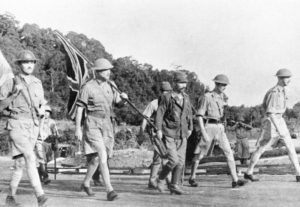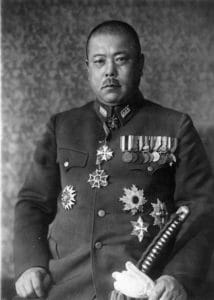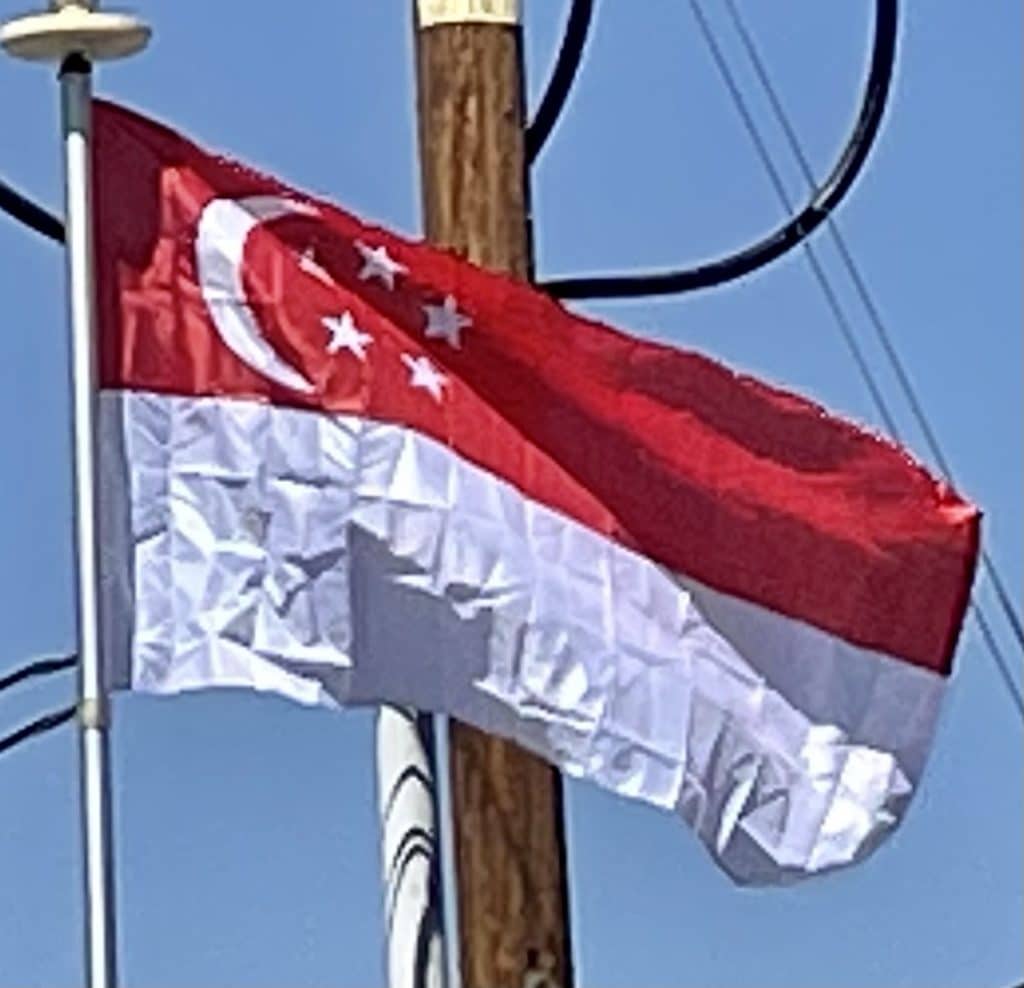
British and Empire losses during the fighting for Singapore were heavy, with a total of nearly 85,000 personnel captured. About 5,000 were killed or wounded, of which Australians made up the majority. Japanese casualties during the fighting in Singapore amounted to 1,714 killed and 3,378 wounded. The occupation was to become a major turning point in the histories of several nations, including those of Japan, Britain, and Singapore. Japanese newspapers triumphantly declared the victory as deciding the general situation of the war. Between 5,000 and 25,000 ethnic Chinese people were killed in the subsequent Sook Ching massacre. British forces had planned to liberate Singapore in 1945; however, the war ended before these operations could be carried out.
Post-war Period:
After the Japanese surrender to the Allies on 15 August 1945, Singapore fell into a brief state of violence and disorder; looting and revenge-killing were widespread. British, Australian, and Indian troops led by Lord Louis Mountbatten returned to Singapore to receive the formal surrender of Japanese forces in the region from General Seishirō Itagaki on behalf of General Hisaichi Terauchi on 12 September 1945. Meanwhile, Tomoyuki Yamashita was tried by a US military commission for war crimes, but not for crimes committed by his troops in Malaya or Singapore. He was convicted and hanged in the Philippines on 23 February 1946.

Much of Singapore’s infrastructure had been destroyed during the war, including those needed to supply utilities. A shortage of food led to malnutrition, disease, and rampant crime and violence. A series of strikes in 1947 caused massive stoppages in public transport and other services. However, by late 1947 the economy began to recover, facilitated by a growing international demand for tin and rubber. The failure of Britain to successfully defend its colony against the Japanese changed its image in the eyes of Singaporeans. British Military Administration ended on 1 April 1946, with Singapore becoming a separate Crown Colony. In July 1947, separate Executive and Legislative Councils were established and the election of six members of the Legislative Council was scheduled in the following year.
During the 1950s, Chinese communists, with strong ties to the trade unions and Chinese schools, waged a guerrilla war against the government, leading to the Malayan Emergency. The 1954 National Service riots, Hock Lee bus riots, and Chinese middle schools riots in Singapore were all linked to these events. David Marshall, pro-independence leader of the Labour Front, won Singapore’s first general election in 1955. He led a delegation to London, but Britain rejected his demand for complete self-rule. He resigned and was replaced by Lim Yew Hock in 1956, and after further negotiations Britain to grant Singapore full internal self-government for all matters except defense and foreign affairs. During the subsequent May 1959 elections, the People’s Action Party (PAP) won a landslide victory. Governor Sir William Allmond Codrington Goode served as the first Yang di-Pertuan Negara (Head of State).

Within Malaysia:
PAP leaders believed that Singapore’s future lay with Malaya, due to strong ties between the two. It was thought that reuniting with Malaya would benefit the economy by creating a common market, alleviating ongoing unemployment woes in Singapore. However, a sizeable pro-communist wing of the PAP was strongly opposed to the merger, fearing a loss of influence, and hence formed the Barisan Sosialis, splitting from the PAP. The ruling party of Malaya, United Malays National Organisation (UMNO), was staunchly anti-communist, and it was suspected UMNO would support the non-communist factions of PAP. UMNO, initially skeptical of the idea of a merger due to distrust of the PAP government and concern that the large ethnic Chinese population in Singapore would alter the racial balance in Malaya on which their political power base depended, became supportive of the idea of the merger due to joint fear of a communist takeover.
